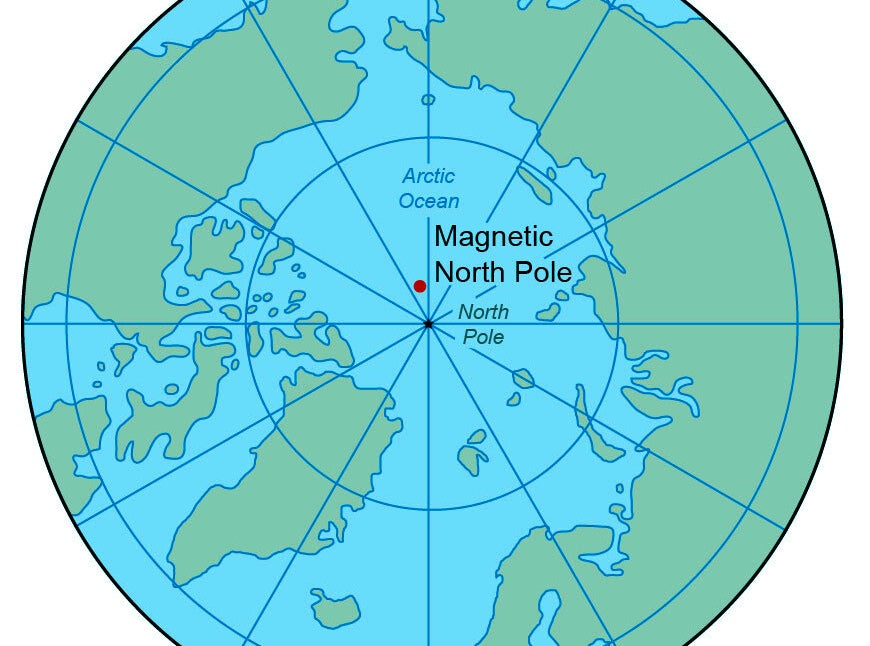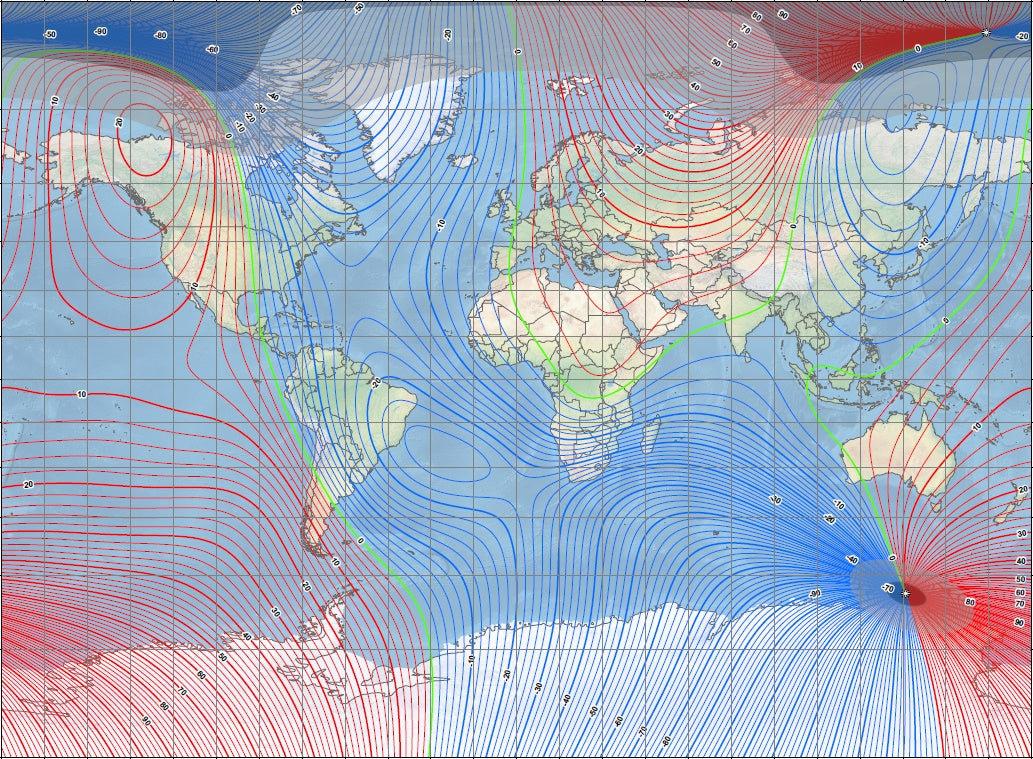What is Declination?

The Earth's magnetic field isn't exactly lined up with the planet's rotation. So, the Magnetic North Pole isn't in the exact same location as the True Geographic North Pole.
This means that North on your compass might not be the same as True North on your map. The distance between the True North Pole and the Magnetic North Pole in 2023 is just over 300 miles, but it has been as much as 1200 miles at some point in the earth’s history.
This difference between where your compass points (Magnetic North) and the real north on a map (True North), measured as an angle in degrees, is called magnetic declination.

To make things even more interesting, magnetic declination isn't the same everywhere on Earth. It changes depending on where you are. This is because the Earth's magnetic field isn't spread out evenly. It's like there's a big invisible magnet inside our planet, and it's not perfectly centered. That's why the declination lines aren't straight. They curve and twist around the Earth, following the strange shape of the magnetic field.
And these lines shift slightly over time. It may take many years before it shifts enough to matter, but it’s always changing. So, when you are working with an old map you should be aware that while True North is still the same, the published magnetic declination amount on your map may not be the correct magnetic declination amount for today.
Now that you know about magnetic declination, you'll definitely want to find the current declination value for your area today. You just need to go here: